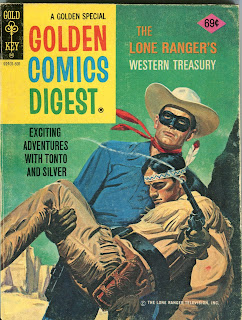FANTASTIC FOUR #82

So Reed, Ben and Johnny zip off in a rocket ship to the Great Refuge to find out what’s going on.
When Crystal finds out what’s going on, she tries to zap Maximus, but he’s using a personal force field (a “sub-ionic force field,” to be exact—Stan had a mastery of technobabble that writers of Star Trek must have envied).
When the rest of the Fantastic Four show up, they are smacked down by as robot specifically designed to counter their powers. Though Ben does manage to get in one of his best-ever one-liners:
By the end of the issue, all the good guys are unconscious or captured. And Maximus reveals his giant hypno-gun that will give him control of the entire planet.
It’s yet another plot that allows Jack Kirby to go to town in designing futuristic machinery and robots. At this point, there’re only about 20 issues of Jack Kirby left to go before he leaves Marvel for DC. But, even as he grew increasingly unhappy with his treatment at Marvel, the quality of his work never dropped. In this issue, we once again have a strong plot with solid characterizations and absolutely wonderful visuals.
SPIDER MAN #68
During the 1960s, Stan Lee sometimes seemed critical of hippies and the tendency of college students to protest stuff at the drop of a hat. But in this issue, he presents college students with a legitimate grievance and their decision to use civil disobedience as something that is arguably justifiable.
Robbie Robertson’s son Randy is involved in the protest, which centers around turning an exhibition hall into low-rent housing for students in need. And reading through this story, it’s impressive to note just how even-handed Stan Lee is in handling the issue. Peter’s been so busy fighting super villains he doesn’t know what the protest is about until he’s asked to join. This allows Stan to use his thoughts to examine the issue—his sympathy is with the students, but he also doesn’t know if the college administration has a legitimate reason for rejected their demands.
Stan also shows that people on both sides of an issue can become angry and unreasonable—highlighted when another black student shouts at Randy that his dad is an Uncle Tom.
But this is a comic book, so a supervillain is going to get involved eventually. It turns out to be the Kingpin, who uses the demonstration as a distraction to storm the exhibition hall and steal an ancient clay tablet on display there. (Supposedly, if the writing on the tablet is deciphered, it would be a source of great power.) Spider Man, of course, gets involved. But the need to protect innocent people allows Kingpin to escape with the tablet. Spider Man pursues, while Randy and a few other protesters are arrested on the suspicion that they were working with Kingpin.
It’s a great issue. Romita, of course, gives us some great action sequences. But he and Stan also manage to deal with a real-life issue in an even-handed way without interrupting the inherent drama of the story.
THOR #160
Stan and Jack present us with another of the Top Five Thor stories of all time—right up there with the Mangog or the first Hercules story arcs.
This is, in fact, a particularly strong month for Lee and Kirby. Where they had come up with a story in Fantastic Four that let Jack really go to town with his imagery, here Jack goes to town, pretty much buys the town outright, then re-builds it into an even better town.
Tana Nile, the alien from Rigel that Thor first met 31 issues ago, shows up on Earth to ask the Thunder God for help. Galactus is roaming the universe near Rigel and Tana’s people need help to stop him.
There is one odd bump in this story in regards to the overall Marvel Universe continuity. Thor seems to be learning about Galactus for the first time here. But Galactus tried to eat the Earth once and had very recently been back to Earth again. Granted Thor wasn’t involved in either of those adventures, but gee whiz, doesn’t the guy ever read a newspaper? Even in a world full of superheroes, something like Galactus is going to generate headlines.
But that’s not something that affects the overall quality of this specific story. (Besides, I do recognize the need to explain who Galactus is to any Thor fans who don’t read the FF.)
Soon, Thor is put in a small spaceship along with the Recorder. The two zip off to find and stop Galactus. Following them is a fleet of space ships holding the survivors of worlds destroyed by the big guy.
And what is Galactus doing while all this is happening. He’s decided it’s time for dinner—with EGO THE LIVING PLANET as the main course.
Thor and the Recorder stumble upon the Galactus/Ego beat-down. Their ship is destroyed the issue ends with the two floating helplessly in the vacuum of space.
Gee whiz, there’s great stuff here. Jack Kirby continues to make dramatic use of splash pages to give his visuals the proper impact—making everything literally drip with 100% pure Awesome.
With these three issues, 1969 is off to a great start. In fact, I believe it was the Awesomeness leaking out into the real world from the Marvel Universe that would allow the New York Mets to win the World Series that year.
In February, the FF and the Inhumans both stage jail breaks; Spider Man and Kingpin continue to fight over a lump of clay; and Thor continues to deal with two of the most powerful entities in the universe.






















































